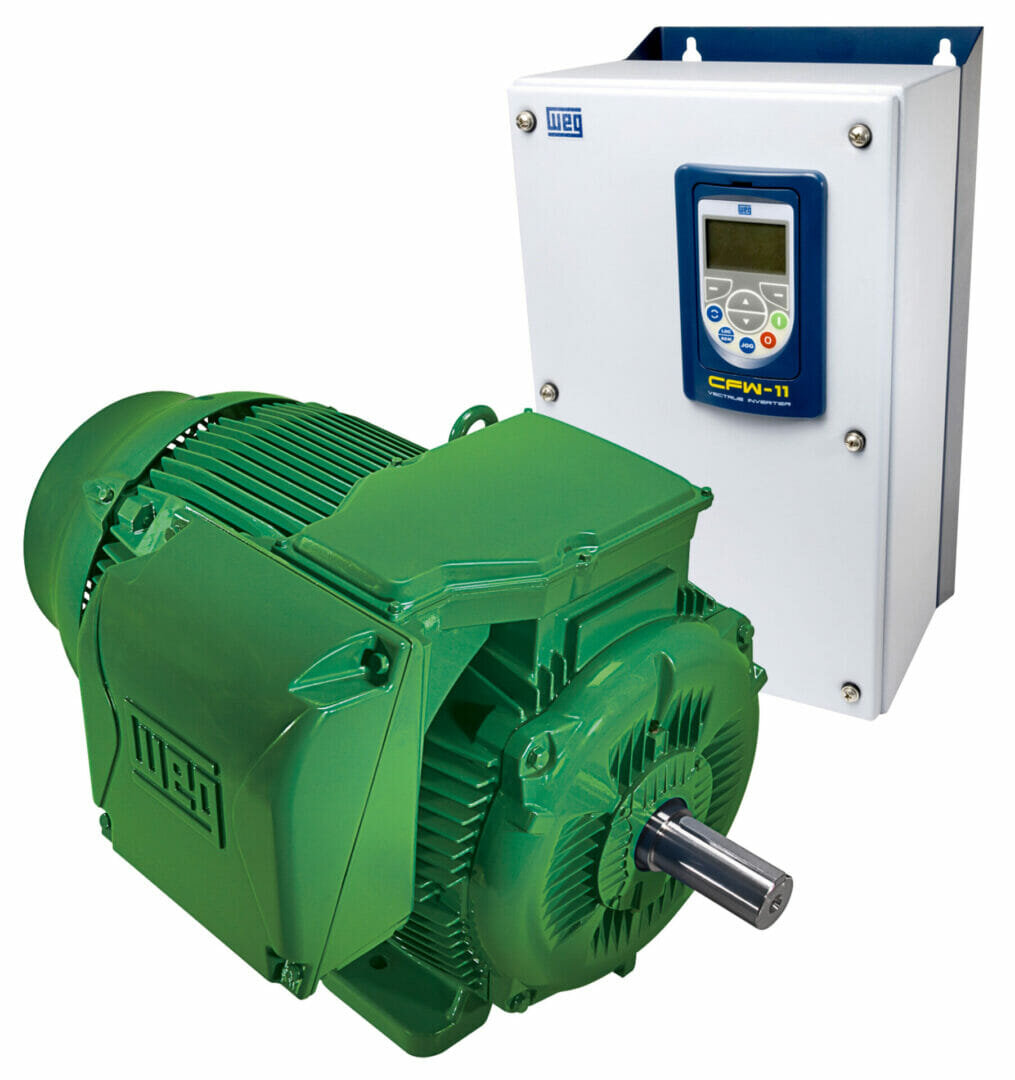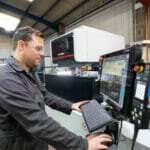~ How motors and drives complement Industry 4.0 and better communications ~
According to Pricewaterhouse Coopers (PwC), 98 per cent of industrial companies in Europe expect to increase their efficiency with digital technologies, predictive maintenance or augmented reality (AR) solutions. But where do variable speed drives (VSDs) fit into this? Here, Marek Lukaszczyk, European and Middle East marketing manager at VSD specialist WEG, explains three ways that embracing digitalisation can expand and grow industrial businesses’ capabilities.
Industry 4.0
With many manufacturers seeking a transition to smart factories, among the defining factors is the integration of intelligent motor control systems. Many of the latest VSDs come with embedded logic in the form of an on-board programmable logic controller (PLC), making it not only possible to monitor drives over a network, but to execute programs. The cost comparison is also favourable, with intelligent VSDs offering an inexpensive way to bring the latest Industry 4.0 technology on board and help grow the business.
Many productivity benefits are available, such as greater operational efficiency and quality control, as well as smart machine optimisation, remote/wireless diagnostics and predictive maintenance.
Communications
Nearly all VSDs have integrated serial comms as standard. But what are serial comms in layperson’s terms? They involve transmitting a number of digital pulses to a VSD that will interpret them, carry out the command(s) and perhaps return a signal. However, two important factors need to be defined. First, the hardware, which usually boils down to wireless technology or fibre-optic cables.
Second, the communications protocol must be defined to avoid any signal mix-ups. An extensive number are available, and the type of application usually steers the final decision. Ethernet is a case in point, and much of the automation industry is quickly transitioning to Ethernet as its preferred communications standard. VSDs that provide Ethernet connectivity as a standard feature are increasingly found in factory automation applications, like those within the automotive and food processing sectors, as well as wastewater treatment facilities.
Such VSDs can also connect to a manufacturing execution system (MES) network and exchange data in both directions. Ultimately, a configuration like this creates a gateway to other connected automation equipment throughout the plant.
Plant managers should also consider the variety of common open fieldbus systems that are available. A fieldbus is used in machines and systems to connect sensors and actuators, or motors, to each other and to one or multiple industrial PCs or PLCs. They make it possible to exchange data between different system components over long distances and under high external load.
Available fieldbus systems include PROFIBUS, CAN bus, DeviceNet, BACnet and Modbus — most of which have Ethernet variants. Fieldbus systems are widespread across industry and are continuing to grow, but industrial Ethernet is arguably growing even more quickly.
Wireless diagnostics
Wireless diagnostics are the way ahead for VSDs — be it via Wi-Fi, Bluetooth or some other wireless technology. This capability is good news for maintenance teams, where access to an enclosure can often be limited due to its location or use within a plant.
As a result, engineers are able to connect directly to the system remotely using the drive’s integral wireless signal. Once connected, the maintenance team can view and diagnose the issue without any physical contact with the drive whatsoever. If the wireless diagnostics data is trended, then this information can be used to support predictive maintenance strategies, for example.
A number of today’s VSDs feature a web server that can monitor application continuity with time-stamped motor or drive-specific data. Moreover, any motor or drive data can be shared with a master PLC should an application fault occur.
In fact, VSDs can provide a wide variety of data, such as motor current, motor torque, motor thermal state, drive thermal state and bus voltage, from when the actual fault occurred. Having data of this nature at their fingertips means that maintenance technicians can perform detailed root-cause analysis. Using the information collected, suitable alarms or warnings can be triggered should application data exceed a pre-determined limit. If required, this strategy could also be used to stop the application, quelling any potential problem before unwanted downtime results.
Consider a fan as a practical example. Latest-generation VSDs feature algorithms that can monitor the performance of wear components such as fans, and predict their service life using data that includes temperature, operational speed and total running hours. The maintenance team can exploit this information to repair or replace the fan accordingly, even planning work to take place during a scheduled shutdown period.
90 per cent of industrial companies surveyed by PwC said they feel digitalisation offers their companies more opportunities than risks. By taking the right approach to VSDs, these companies can fully-embrace the opportunities of digital technologies, like integrated MES, predictive maintenance or augmented reality (AR) solutions, in ways that truly expand and grow their capabilities.
For more information on WEG’s range of VSDs and to download the whitepaper, visit www.weg-automation.com.








